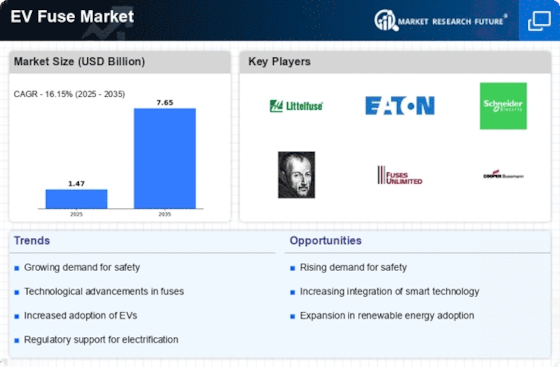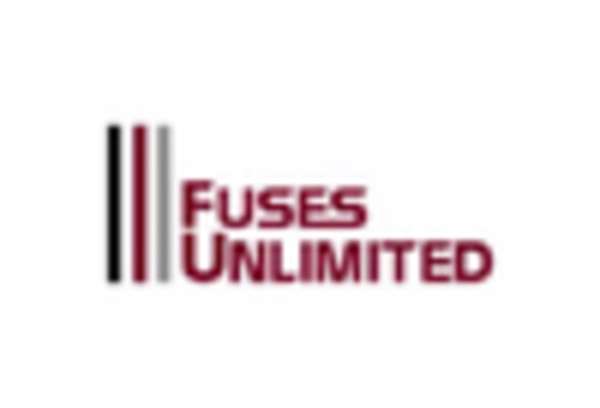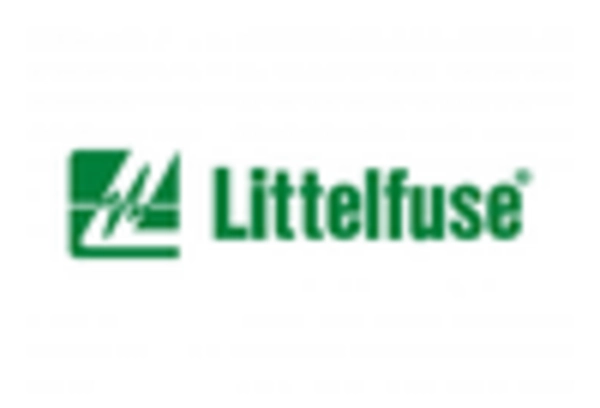The EV Fuse Market is currently characterized by a dynamic competitive landscape, driven by the increasing demand for electric vehicles (EVs) and the necessity for reliable electrical components. Key players such as Littelfuse Inc (US), Eaton Corporation (US), and Schneider Electric (FR) are strategically positioning themselves through innovation and partnerships. Littelfuse Inc (US) focuses on enhancing its product portfolio with advanced fuse technologies tailored for EV applications, while Eaton Corporation (US) emphasizes sustainability and energy efficiency in its offerings. Schneider Electric (FR) is leveraging digital transformation to optimize its manufacturing processes, thereby enhancing operational efficiency. Collectively, these strategies not only bolster their market presence but also contribute to a more competitive environment, where technological advancement is paramount.
In terms of business tactics, companies are increasingly localizing manufacturing to reduce lead times and optimize supply chains. This approach appears to be a response to the growing demand for EVs, which necessitates a more agile production framework. The market structure is moderately fragmented, with several players vying for market share. However, the influence of major companies is significant, as they set industry standards and drive innovation, thereby shaping the overall market dynamics.
In August 2025, Littelfuse Inc (US) announced the launch of a new line of high-performance fuses specifically designed for electric vehicle applications. This strategic move is likely to enhance their competitive edge by addressing the unique challenges posed by EV power systems, such as increased current loads and thermal management. The introduction of these fuses could potentially position Littelfuse as a leader in the EV fuse segment, catering to the evolving needs of manufacturers in the automotive industry.
In September 2025, Eaton Corporation (US) unveiled a partnership with a leading EV manufacturer to develop integrated power management solutions. This collaboration is indicative of Eaton's commitment to sustainability and innovation, as it aims to create more efficient energy systems for electric vehicles. By aligning with a prominent player in the EV market, Eaton not only strengthens its product offerings but also enhances its visibility and influence within the industry.
In July 2025, Schneider Electric (FR) expanded its manufacturing capabilities in Europe to meet the rising demand for EV components. This expansion is strategically significant, as it allows Schneider to localize production and reduce supply chain vulnerabilities. By increasing its manufacturing footprint, Schneider Electric is likely to improve its responsiveness to market demands, thereby solidifying its position in the competitive landscape.
As of October 2025, the EV Fuse Market is witnessing trends that emphasize digitalization, sustainability, and the integration of artificial intelligence in manufacturing processes. Strategic alliances are becoming increasingly vital, as companies seek to leverage complementary strengths to enhance their competitive positioning. Looking ahead, it appears that the focus will shift from price-based competition to differentiation through innovation, technology, and supply chain reliability. This evolution suggests that companies that prioritize these aspects will likely emerge as leaders in the rapidly evolving EV landscape.

















Leave a Comment